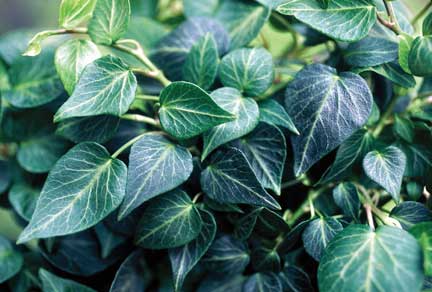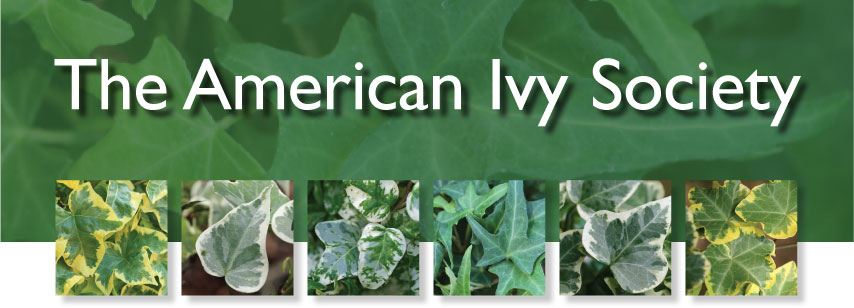|
Ivy of the Year 2002
Hedera helix 'Teardrop'

Photo Rachel Cobb
Hedera helix 'Teardrop' has been selected by The American Ivy Society as "Ivy of the year for 2002.
It isn't hard to guess how 'Teardrop' got its name. It really looks like a teardrop with shiny dark green leaves that are unlobed and longer than wide. It has conspicuous green veins radiating out from the base of the leaf blade. The unusual leaf shape is probably the result of fasciation in the petiole. "Fasciation" is where there is a thickening or bundling together of various plant tissues. This can happen in any part of the plant, stem, petiole or leaf blades. In 'Teardrop' the fasciation appears to be in the petiole which causes some constriction of the leaf base which produceds the unusual venation pattern.
'Teardrop' is self-branching and easy to grow in pot or basket. On occasion you may even see multiple branches arising from a single node. In the garden it is not invasive and has been tested for hardiness. It has survived temperatures as low as minus l5 degrees F. in Ohio.
Ivies chosen for the "Ivy of the Year" must be easy to grow, hardy, lush beautiful and not invasive. It must also pass greenhouse and outdoor trials by The American Ivy Society as well as by commercial growers.
Hedera helix 'Teardrop" was first described in 1955 by Bess L. Shippy who gave it its name.
It has gone through various name changes as growers in Denmark and Holland discovered this interesting plant, but The International Registrar of Hedera has now accepted 'Teardrop' as the correct name.
"Ivy of the Year"
Because of the surge in popularity of ivy as a pot plant as well as in the garden, The American Ivy Society announced it will select an "Ivy of the Year" annually commencing in 2001. The ivy chosen from the nominees must be easy to grow, hardy, lush, beautiful, and not invasive in the garden.
The "Ivy of the Year" will be chosen by a committee made up of members of The American Ivy Society, nurseryman and growers across the United States. Each ivy will have completed the three year trial period in The American Ivy Society test gardens as well as in commercial nurseries.
When The American Ivy Society was founded in 1974 there were approximately 60 different cultivars of Hedera (Ivy) grown commercially. Today there are over 480 named cultivars. The intense interest in ivy began when people learned that the new ivies are available in an array of colors ranging from all shades of green, green and white to yellows and golds - and they are not invasive as were many of the older cultivars. Some ivy leaves are so delicately cut they resemble the print a bird's foot makes in the sand, while others are curly or fan shaped. They are used as groundcovers, garden specimens, hanging baskets, mixed containers, topiary and the adult forms of ivy are even grown as shrubs.

|
